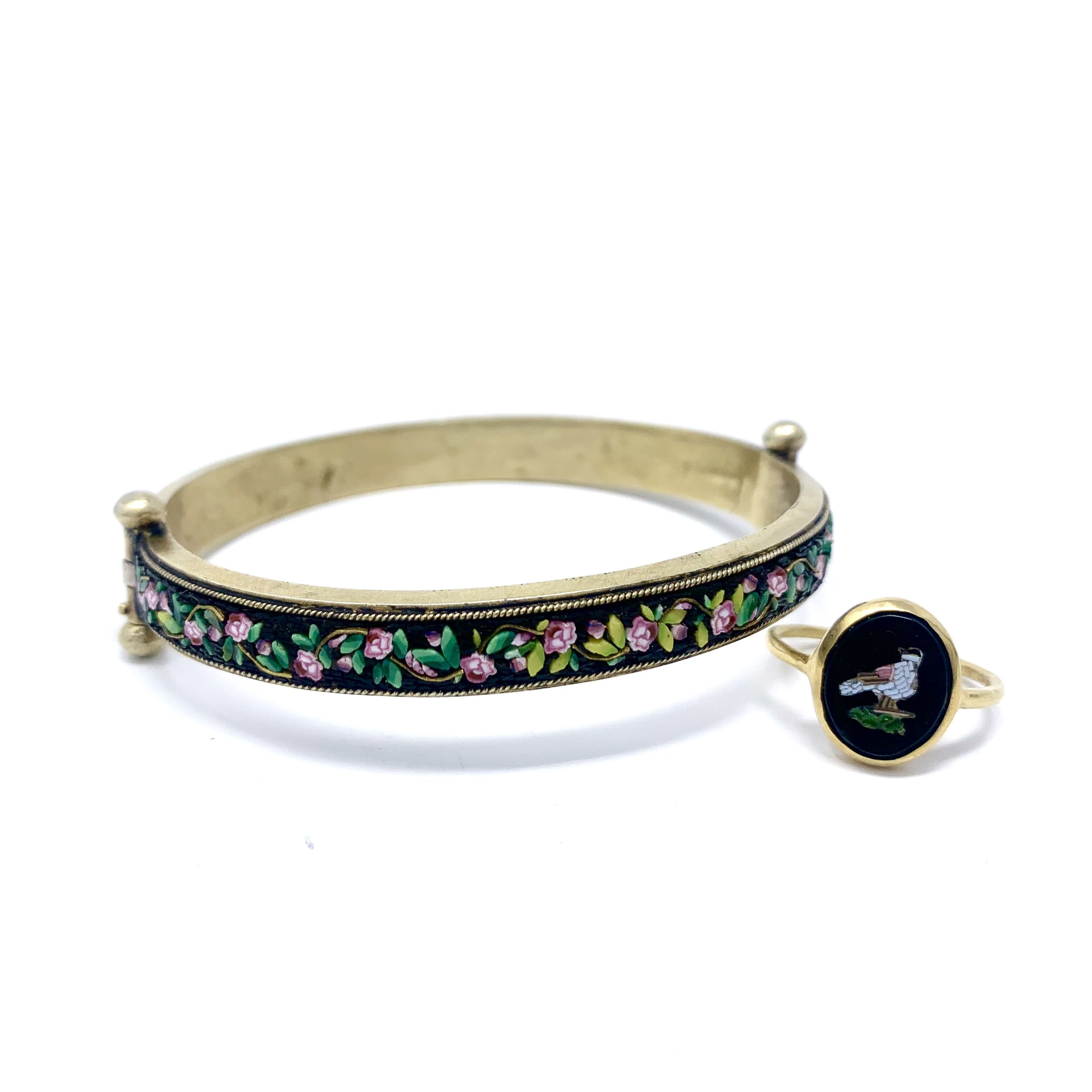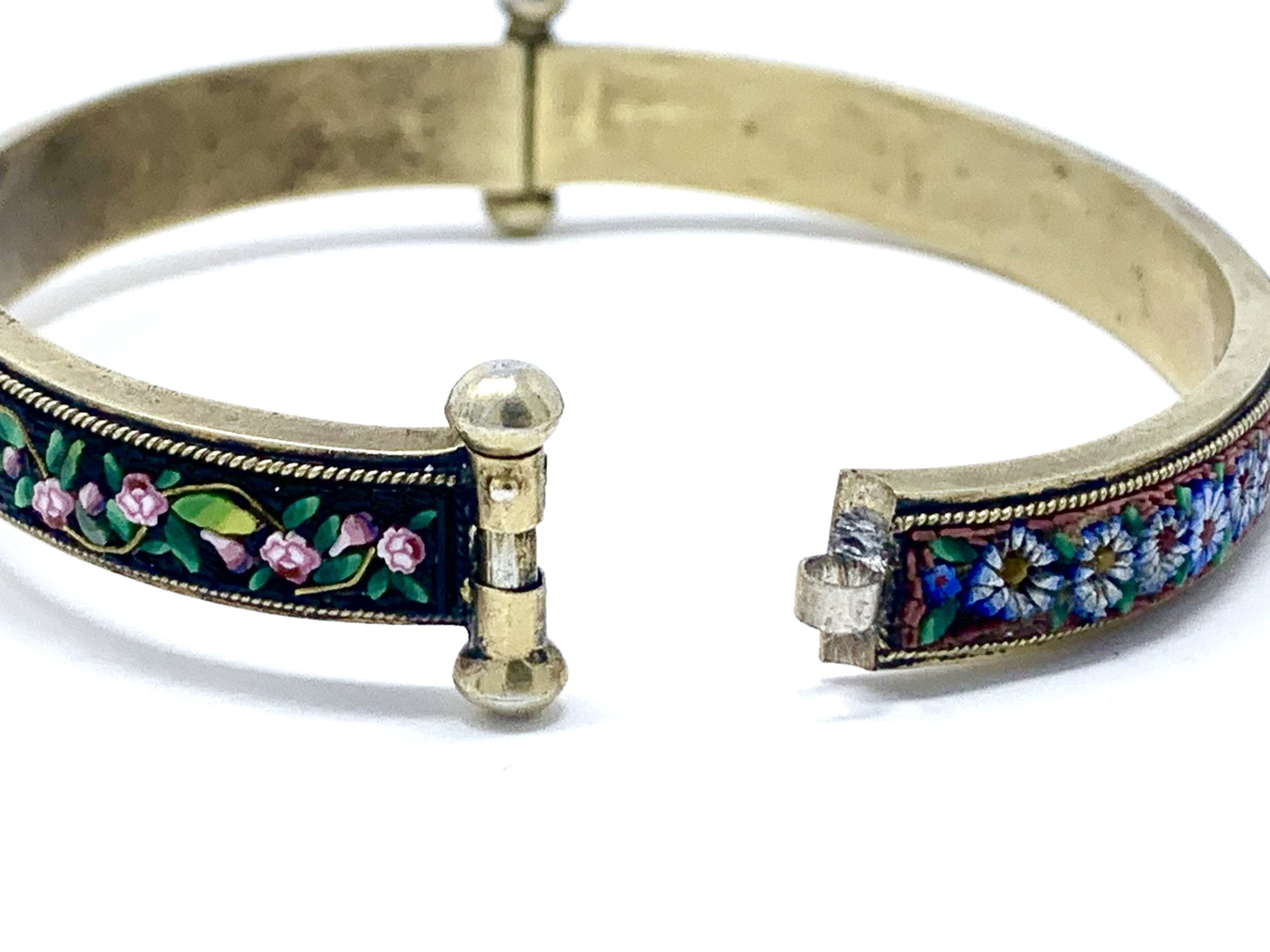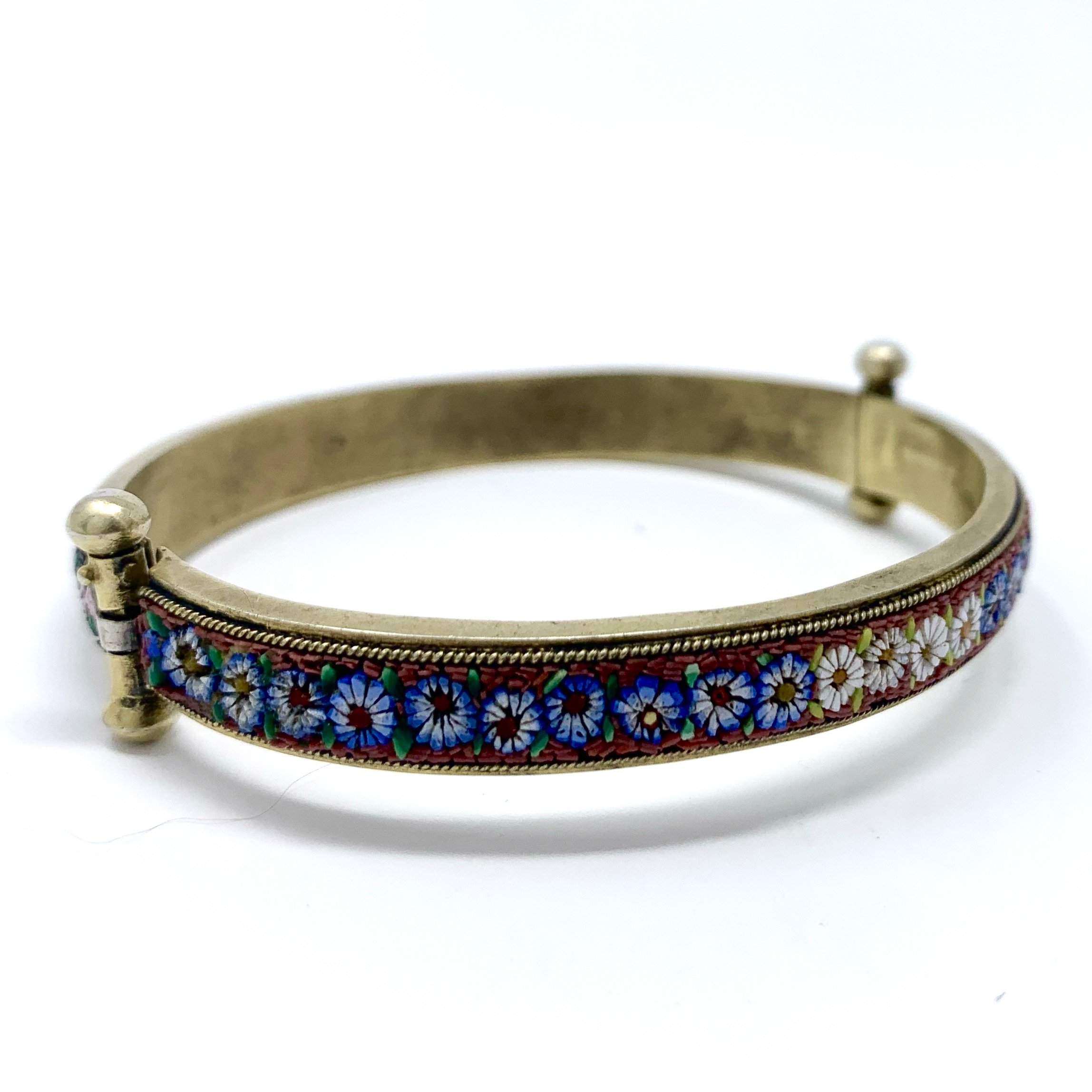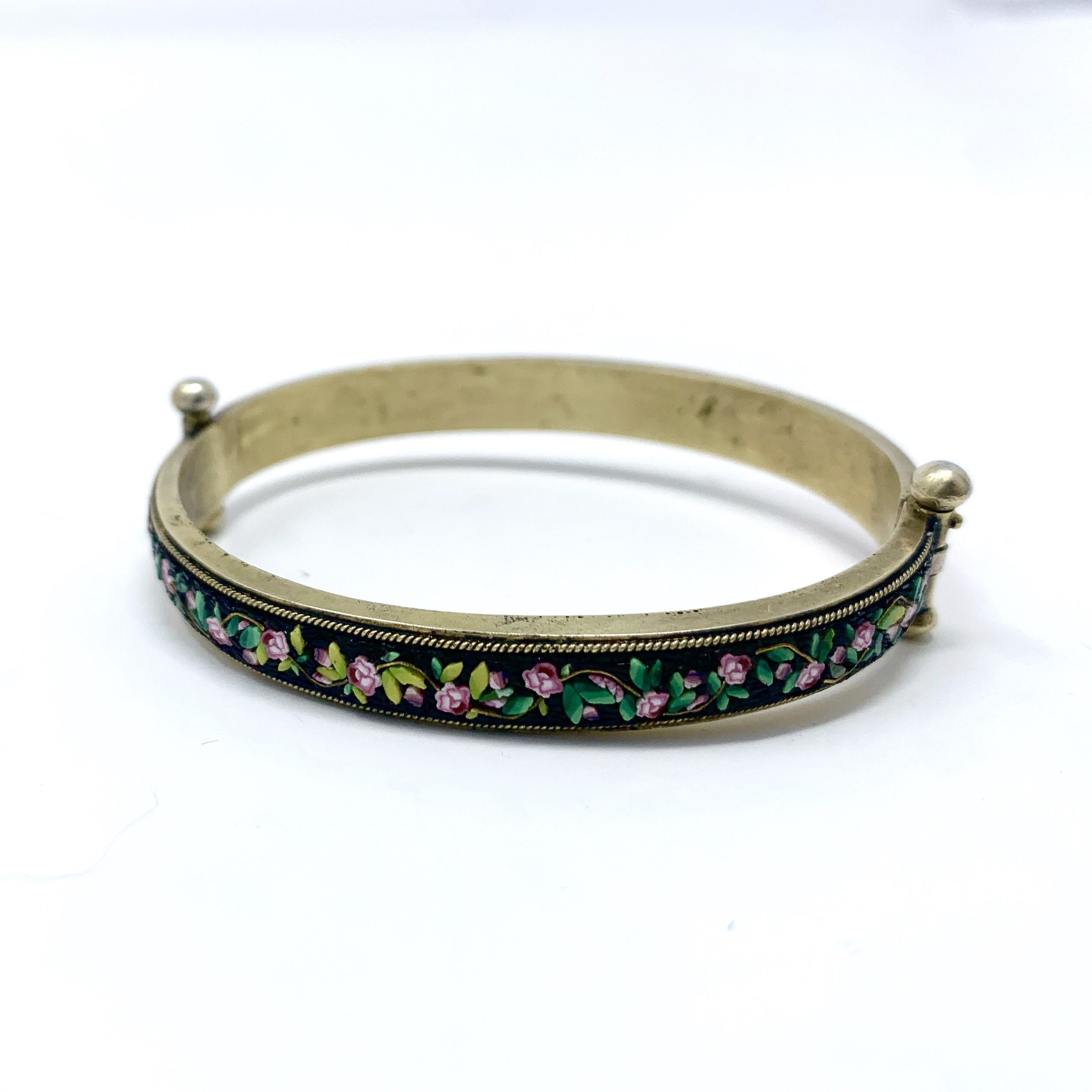 Image 1 of 5
Image 1 of 5

 Image 2 of 5
Image 2 of 5

 Image 3 of 5
Image 3 of 5

 Image 4 of 5
Image 4 of 5

 Image 5 of 5
Image 5 of 5






Micromosaic Bangle
The “Doves of Pliny”, one of the finest examples of mosiac was discovered in 1737, and was just as miraculous then as it was when Emperor Hadrian acquired it as an antique. During the middle of the 18th century, Italian artisans were inspired by the “Doves of Pliny” to try even finer mosaics with even smaller tesserae (mosaic tiles). These works of art were largely sold as souvenirs for wealthy travelers on their Grand Tour. Micromosaic jewelry became extremely popular towards the middle of the 19th century, after which it’s quality and production slowly declined. This bangle features a garland of roses on a black ground, and on the other side a garland of blue and white daisies sit on a rust color ground. The metal is made of gilt silver.
Inner dimensions: 2 3/8 x 2 1/16
The “Doves of Pliny”, one of the finest examples of mosiac was discovered in 1737, and was just as miraculous then as it was when Emperor Hadrian acquired it as an antique. During the middle of the 18th century, Italian artisans were inspired by the “Doves of Pliny” to try even finer mosaics with even smaller tesserae (mosaic tiles). These works of art were largely sold as souvenirs for wealthy travelers on their Grand Tour. Micromosaic jewelry became extremely popular towards the middle of the 19th century, after which it’s quality and production slowly declined. This bangle features a garland of roses on a black ground, and on the other side a garland of blue and white daisies sit on a rust color ground. The metal is made of gilt silver.
Inner dimensions: 2 3/8 x 2 1/16
The “Doves of Pliny”, one of the finest examples of mosiac was discovered in 1737, and was just as miraculous then as it was when Emperor Hadrian acquired it as an antique. During the middle of the 18th century, Italian artisans were inspired by the “Doves of Pliny” to try even finer mosaics with even smaller tesserae (mosaic tiles). These works of art were largely sold as souvenirs for wealthy travelers on their Grand Tour. Micromosaic jewelry became extremely popular towards the middle of the 19th century, after which it’s quality and production slowly declined. This bangle features a garland of roses on a black ground, and on the other side a garland of blue and white daisies sit on a rust color ground. The metal is made of gilt silver.
Inner dimensions: 2 3/8 x 2 1/16

